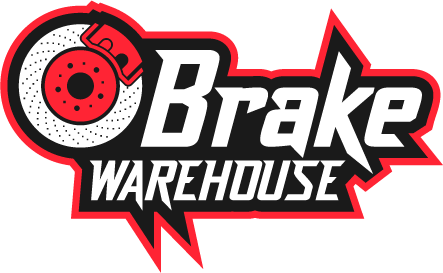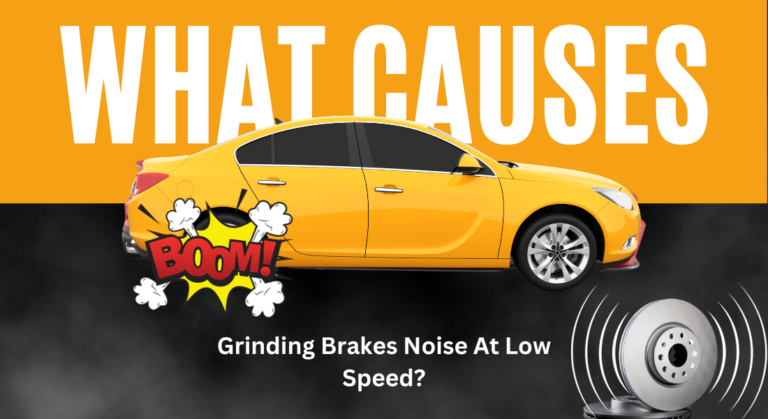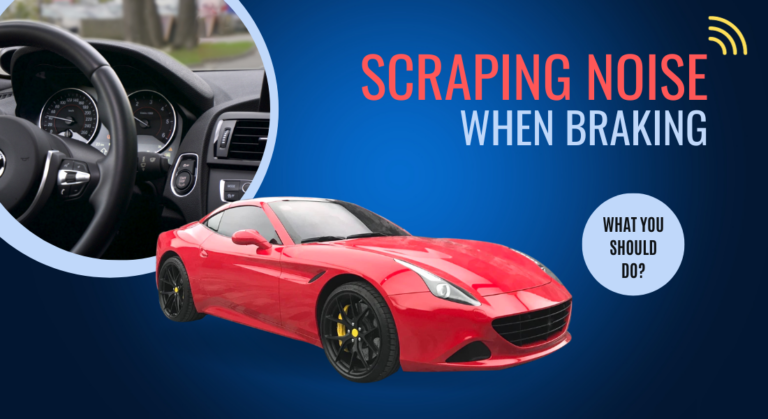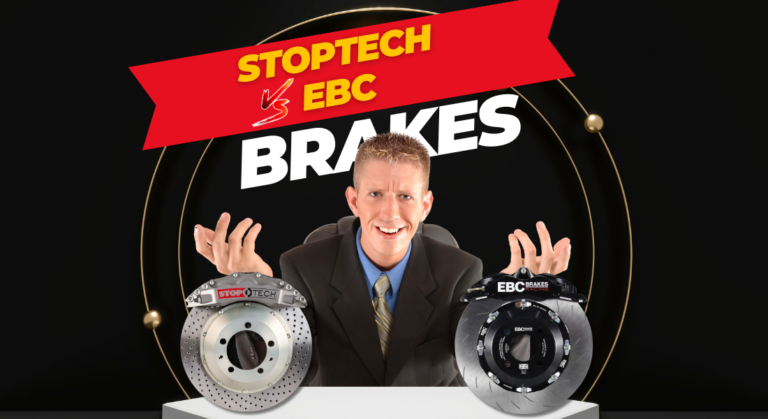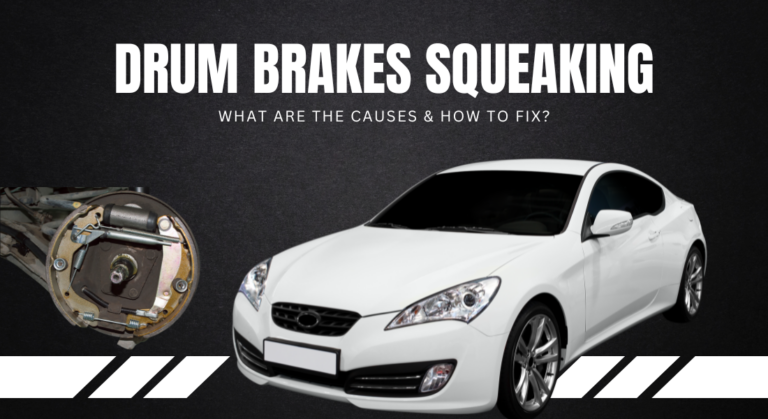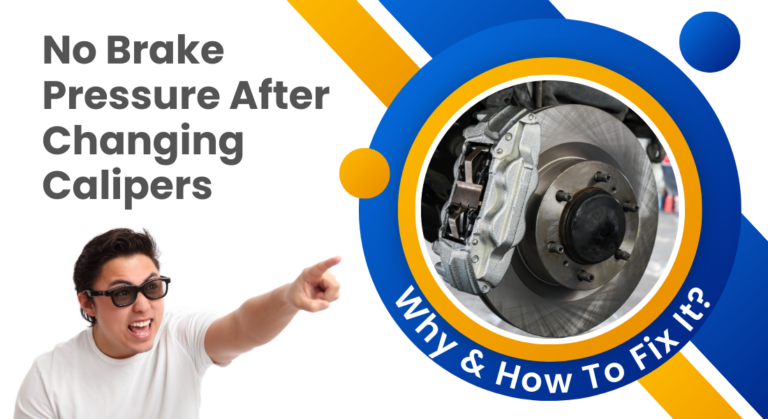What Causes Brakes Pulsating When Stopping? – Fix Now
If you notice your vehicle’s brakes pulsating, vibrating, or shaking when you apply the brakes, please get them inspected right away. This is a warning sign that something is wrong with your braking system. Beyond just being annoying, brakes pulsating when stopping can potentially become a safety hazard if left unaddressed.
So if you notice your brakes starting to pulsate or vibrate, have your vehicle inspected by a qualified technician. An expert will determine the specific issue and fix the problem.

Causes Brakes Pulsating When Stopping With Solutions
Brakes pulsating when stopping occurs because some part of your brake system is not functioning smoothly, evenly, or properly. That causes an uneven force to be applied to your brake rotors each time they rotate. The common possible culprits include:
- Warped brake rotors
- Loose or corroded caliper mounting bolts
- Stuck or sticking caliper pistons
- Worn or damaged caliper guide pins/sliders
- Uneven or premature pad wear
- Bent brake hose or metal brake line
- Leaking brake wheel cylinder (on drum brakes)
- Out-of-round brake drums (on drum brakes)
1. Warped Brake Rotors
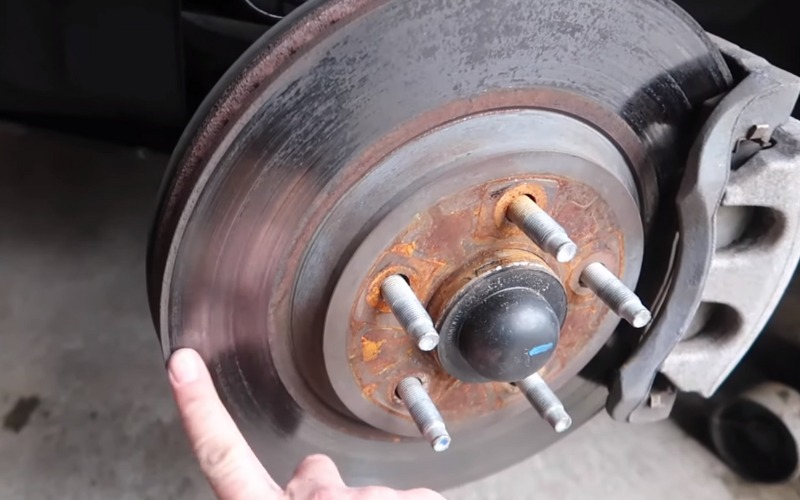
Warped brake rotors are often the culprit behind pulsating brakes. When your brake rotors become warped, it means they are no longer flat. They have developed a wavy pattern causing uneven pad contact. Here are the most common ways rotors become warped:
When you repeatedly slamming on the brakes at high speeds you can cause the rotors to heat up beyond their design limits, warping the metal.
When one of your brake pads wears faster than the other, it can put uneven pressure on the rotor and bend it over time.
Solution:
- Start by replacing the severely warped rotors with new rotors.
- You can also resurface the brake rotors if they are not badly warped. This involves machining the rotors on a brake lathe to restore a flat surface.
Here is a video that explains warped brake rotors in detail:
2. Loose or Corroded Caliper Mounting Bolts

Another reason your brakes are pulsating is loose or corroded caliper mounting bolts. They cause the caliper to rock or shift during braking. This movement is transferred to the rotor, causing it to flex and pulsate. Loose bolts typically develop over time as the factory torque spec is lost.
Solution:
- You need to tighten or replace the mounting bolts as needed. Check for stripped bolt holes.
- Clean the threads and apply an anti-seize thread compound if corroded before torquing the bolts to spec.
- Replace the pads and brake fluid simultaneously for optimal braking performance and feel.
- Check the slide pins, rubber boots, and other components for additional wear that might be causing the issue.
Read Also: Why Is Brake Pad Rubbing On Rotor? – How To Stop!
3. Stuck or Sticking Caliper Pistons
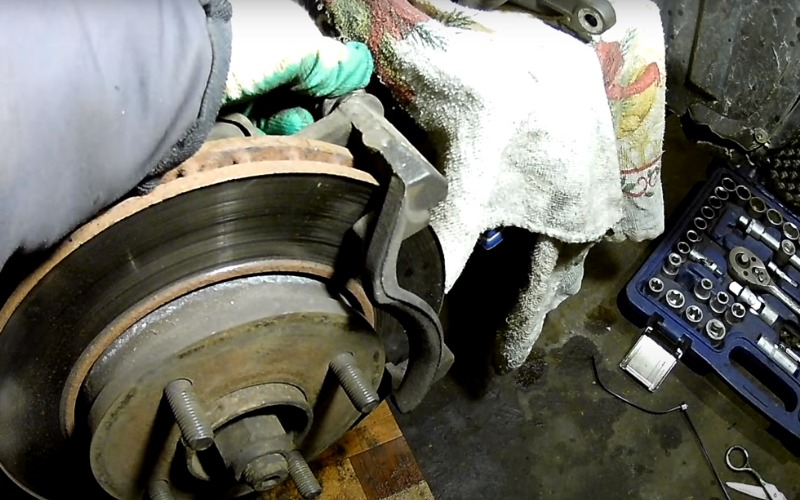
The brake caliper piston should slide in and out smoothly to push the brake pads against the rotor. If your brake piston gets stuck partially extended or fails to retract fully, it causes uneven pad contact when braking. This bends the rotor over time, resulting in pulsation.
Your car’s pistons get stuck for a few reasons. The main causes are:
- Moisture getting inside the piston bore causes rust and corrosion that bonds the piston to the bore wall.
- Worn piston seals allow dirt, debris, and fluid inside the bore jamming the piston.
- Extreme heat from heavy use or overheated brakes cause the piston to bind and stick.
Solution:
- Try lubricating the pistons with brake grease (our recommendation) and working them back and forth.
- Replace them when they start sticking.
- Check the caliper slide pins or sliders for damage or excessive wear before replacing the caliper.
Read Also: No Brake Pressure After Changing Calipers: Here’s How To Fix
4. Worn Or Damaged Caliper Guide Pins/Sliders
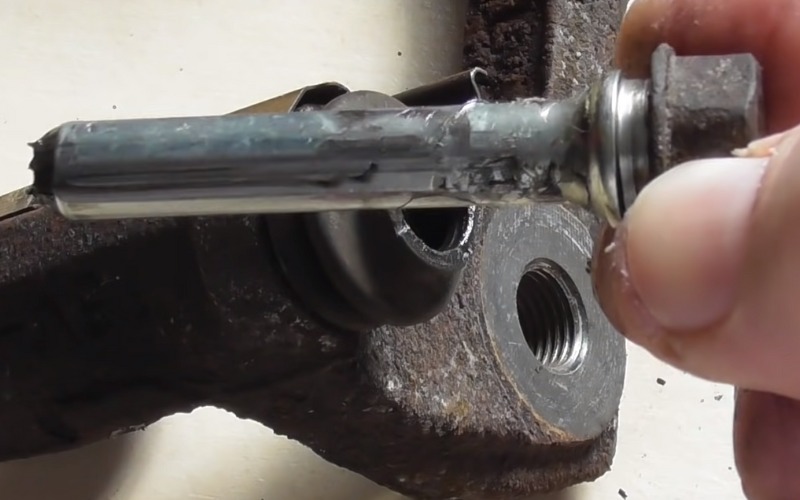
The guide pins and slides allow the caliper to slide back and forth when the brake pads press against the rotor. This sliding movement evenly applies pressure to both pads.
When worn out, the caliper applies brake pressure unevenly to the pads. That results in an imperfect seal against the rotor. The rotor then flexes causing pulsation you feel in the brake pedal and steering wheel.
Solution:
- You need to replace the caliper if the guide pins and slides are severely worn.
- At a minimum, you need to replace the pins. When replacing the caliper, inspect all rubber boots and seals for damage and replace them as needed.
- Remember to lubricate the new pins and slides with high-temperature brake grease before installation.
- Also, torque the caliper mounting bolts to the proper specification.
Read Also: What Happens If My Brake Pad Falls Off? – The Consequences
5. Uneven Or Premature Pad Wear
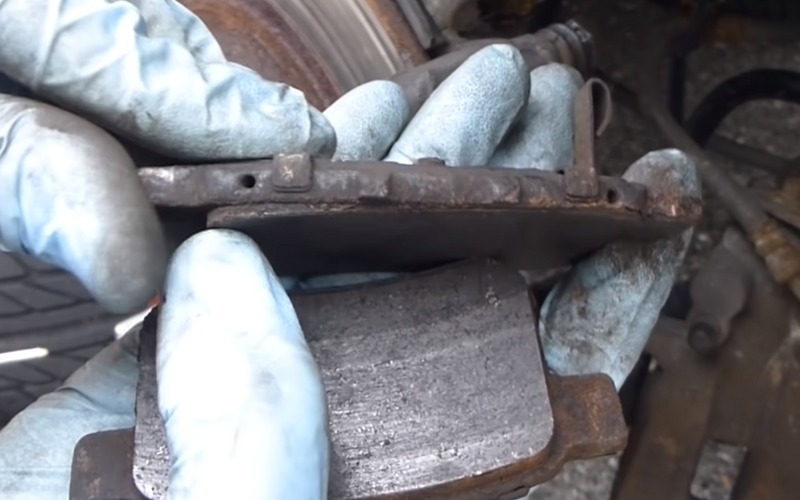
If one of your vehicle’s brake pads wears faster than the other, it can cause pulsating brakes when stopping. That is because of the uneven pressure applied to the rotor.
Uneven pad wear causes the rotor to be pressed unevenly when you’re braking. That deforms the rotor’s shape slightly causing it to flex under the changing pressure from the pads.
The rotor’s movement gets transferred to the brake pedal, which you will feel as a pulse or vibration. Some of the common causes of uneven pad wear:
- If a piston is stuck partly extended when braking, it forces one pad against the rotor while the other pad has more free movement. This leads to faster wear of the pad with less freedom of movement.
- When the slide pins can’t move freely, the caliper cannot adjust evenly to pad wear. This causes one pad to drag against the rotor more than the other.
- If your brake has a leaking seal it can allow brake fluid to lubricate one side of the caliper more than the other. This decreases the friction on that side and speeds up pad wear on the other side.
- If the clip retaining the brake pad is damaged, it can cause the pad to drag against the rotor or become dislodged.
Solution:
- Replace the worn or faulty caliper components.
- Resurface or replace the rotor to restore its shape.
- Install new brake pads to match the wear pattern of the newly surfaced rotor.
Here is a video that demonstrates how to change brake pads and rotors – a complete guide for beginners:
6. Bent Brake Hose Or Metal Brake Line

If there is a bend or kink in the brake line or hose, it can partially block the flow of brake fluid, which reduces the pressure reaching the caliper pistons. This means the caliper pistons do not extend fully, and the brake pads do not engage the rotor evenly.
The uneven pad contact causes the rotor to flex slightly, creating the pulsation felt in the brake pedal. The effect can get worse the hotter the brakes get due to the expansion of the metal lines and hose.
Solution:
- Straighten any bent brake lines or hoses and replace the damaged components in the line.
- The new components should be routed properly to avoid contact with moving or hot components that could cause kinks or damage over time.
7. Leaking Brake Wheel Cylinder (On Drum Brakes)
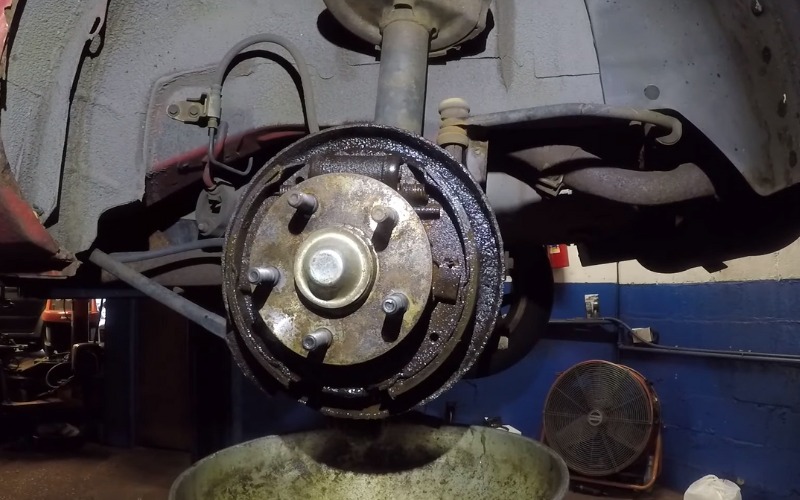
The piston cannot extend fully when the wheel cylinder leaks fluid in a drum brake system. The brake shoes are not pushed out far enough to fully contact the drum. That will give you uneven braking force.
As the drum rotates with only partial contact from the shoes, you will feel the pulsating effect in the brake pedal. The smaller surface area of brake shoe contact also leads to excessive drum and shoe wear.
Solution:
- Inspect other components for wear, like brake shoes, drums, springs, and hardware.
- Lubricate the new cylinder bore and piston.
- Bleed the system to flush out any air or fluid contamination from the leaking cylinder.
- Adjust the brake shoe clearance to the proper specification.
- If the leaking wheel cylinder is damaged for an extended period, the shoes, drums, and other components may also need attention due to uneven wear.
- An overall inspection and assessment are recommended.
8. Out-of-round brake drums (on drum brakes)
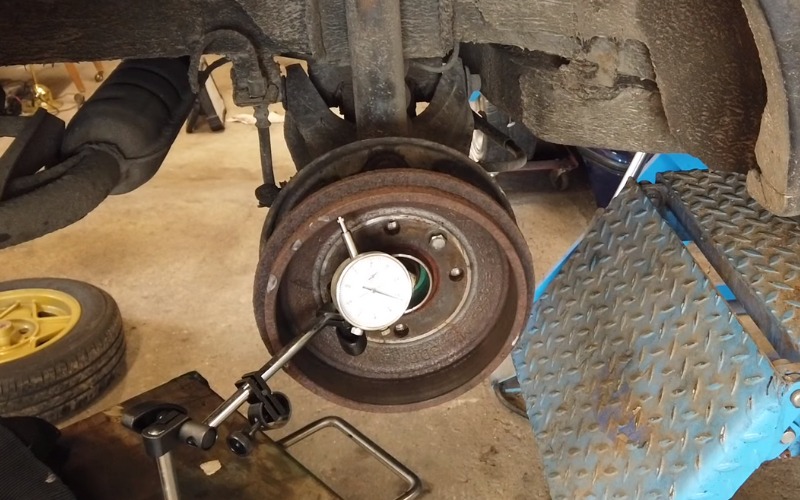
As you enjoy your rides, brake drums can become out-of-round over time due to excessive heat, wear, and corrosion. This deforms the shape of the drum, causing some areas of the drum surface to be closer to the shoes than others.
When you apply the brakes, the shoes do not make full contact with the entire surface of the out-of-round drum. They only contact the portions of the drum that are closest. This creates an uneven braking force allowing the drum to flex as it rotates.
The flexing of the out-of-round drum under uneven shoe pressure causes the pulsation felt in the brake pedal. The uneven shoe contact also leads to accelerated wear of the shoes and drum.
Solution:
- Inspect the shoes for uneven wear patterns from dragging on the drum.
- Replace worn return or tension springs that could allow uneven shoe retraction.
- Check the wheel cylinder for leaks that can cause weaker braking force.
- Bleed the system to flush any contaminants from the wheel cylinder and lines.
Read Also: What Causes Brake Pedal Pulsation ABS System? – Fix Now
Frequently Asked Questions (FAQs)
Here are some interesting faqs related to the topic that you might want answers to:
Will Air In Brake Lines Go Away?
No! You need to bleed the brake line to get rid of the air and refill it properly.
Is It Safe To Drive With Brakes Pulsating When Stopping?
Yes, but only for a short distance. You need to find out the cause and fix it as soon as possible. Take it to the nearest repair shop to be checked by a technician.
Conclusion
Are brakes pulsating when stopping? If your brakes pulsate while stopping, it indicates problems within the braking system that need attention. Common causes include you may have warped brake rotors, loose or corroded caliper mounting bolts, or sticking caliper pistons. It might also be worn caliper guide pins, uneven pad wear, and bent brake hoses or lines.
Some of the solutions you can take involve replacing or resurfacing rotors and tightening or replacing bolts. You can also lubricate or replace caliper pistons and guide pins and worn pad wear, straightening.
Other solutions include replacing brake hoses or lines, fixing leaking wheel cylinders, and inspecting out-of-round drums. Promptly addressing brake pulsation is important for safety and optimal braking performance.
Consult a professional if you can’t handle the issue efficiently.

Meet Zayan, the mechanical genius behind the highly acclaimed brakes problems and solutions website. With over a decade of hands-on experience in the automotive industry, Zayan has become a trusted authority in the realm of brake systems.
His passion for cars, coupled with his expertise in solving complex brake-related issues, has earned him a devoted following of car enthusiasts, mechanics, and everyday drivers seeking reliable guidance.
